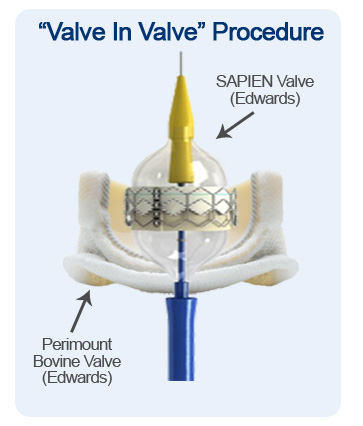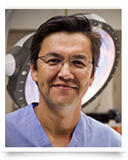“Are ‘Valve-in-Valve’ Procedures Possible With The SAPIEN Aortic Valve?” Asks Bernard
By Adam Pick on February 22, 2012
In connection with yesterday’s post, I received many interesting questions about the SAPIEN aortic valve replacement. For example, Bernard asked about the possibility of a “valve-in-valve” procedure. In his email, Bernard wrote, “My surgeon used a bovine tissue valve to replace my diseased aortic valve. If my new valve requires replacement in the future, can the SAPIEN be used?”

To ensure that Bernard received an appropriate answer to his question, I contacted Dr. Eric Roselli, a leading cardiac surgeon from the Cleveland Clinic.

Dr. Eric Roselli – The Cleveland Clinic
Dr. Roselli is intimately familiar with the development and clinical trials of transcatheter technologies, including the SAPIEN. In his response to Bernard, Dr. Eric Roselli first addressed the possibility of this procedure.
Yes, but for now the experience with a “valve-in-valve” procedure for structural valve deterioration (SVD) of a bioprosthetic valve is still early. What we know is that it can be done in nearly all kinds of the bioprosthetic valves that are commercially available and the results are better when the initial valve is larger in size (i.e. 23mm or greater). This has been done both transfemorally and transapically with relative safety.
Then, Dr. Roselli addressed the traditional approaches for “redo” aortic valve replacement procedures and the risks of valve-in-valve operations:
On the other hand, the experience with redo open heart surgery for SVD of an old biologic valve is something we have great experience with and several centers of excellence have demonstrated surgical risks that match the risk of first time aortic valve replacement (exceptionally low). Therefore, the valve-in-valve procedure for SVD should be approached with caution and for now, it should be reserved for higher risk patients.
So you know, I recently interviewed Dr. Roselli about the future of heart valve treatment. If you are interested, here are the highlights from that discussion.
Thanks to Bernard for his question and special thanks to Dr. Eric Roselli for sharing his clinical expertise with our patient and caregiver community.
Keep on tickin!
Adam
|
Frank Catanzaro says on February 22nd, 2012 at 2:21 pm |
|
This is a pretty basic question. I had a multiple bypass and valve replacement about two years ago. I had a follow up echo cardiogram about 6 months ago. What kind of follow up should I be doing after that. |
 |
|
Donald Henry says on February 22nd, 2012 at 5:06 pm |
|
Bernard, I just had a re-do to replace my bovine tissue aorta valve ,which I got in Feb 2000 when I was 55 years old. I just had it replaced Nov 30 with another bovine tissue valve. The surgery went well, ; however because I got an infection in my blood stream , which attacked my prosthetic valve I had to have emergency surgery. I was treated very agressively with antibiotics drip with a pick line in my arm for 2 weeks while I was in the hospital and for 4 weeks when I came home. This was 24-7; therefore this recovery was much worse than my first operation. So, be very cautious when you go to the dentist, dermatologist, or anyone, who will pentrate your skin. This infection is called endocarditis. I am 66 years old and my bovine valve didn’t quite last 12 years. It would have gone another year or two if it wasn’t for the infection. Hopefully, when I am due for another valve the technology will have advanced enough ,so I can have it done by the transcatheter procedure. Don |
 |
|
Ste Kantor says on June 28th, 2012 at 11:14 pm |
|
Adam, I received my AVR in early May. I”m constantly reading labels and find many people that have received a tissue valve have not heard about this calcium concern. Thanks, |
 |
|
Michelle Poluka says on December 30th, 2014 at 9:55 am |
|
Don what type of dermatological procedures do you have to pre med for? My husband had a suspicious mole removed from his head and did not pre medicate! What are the new guidelines? |
 |












